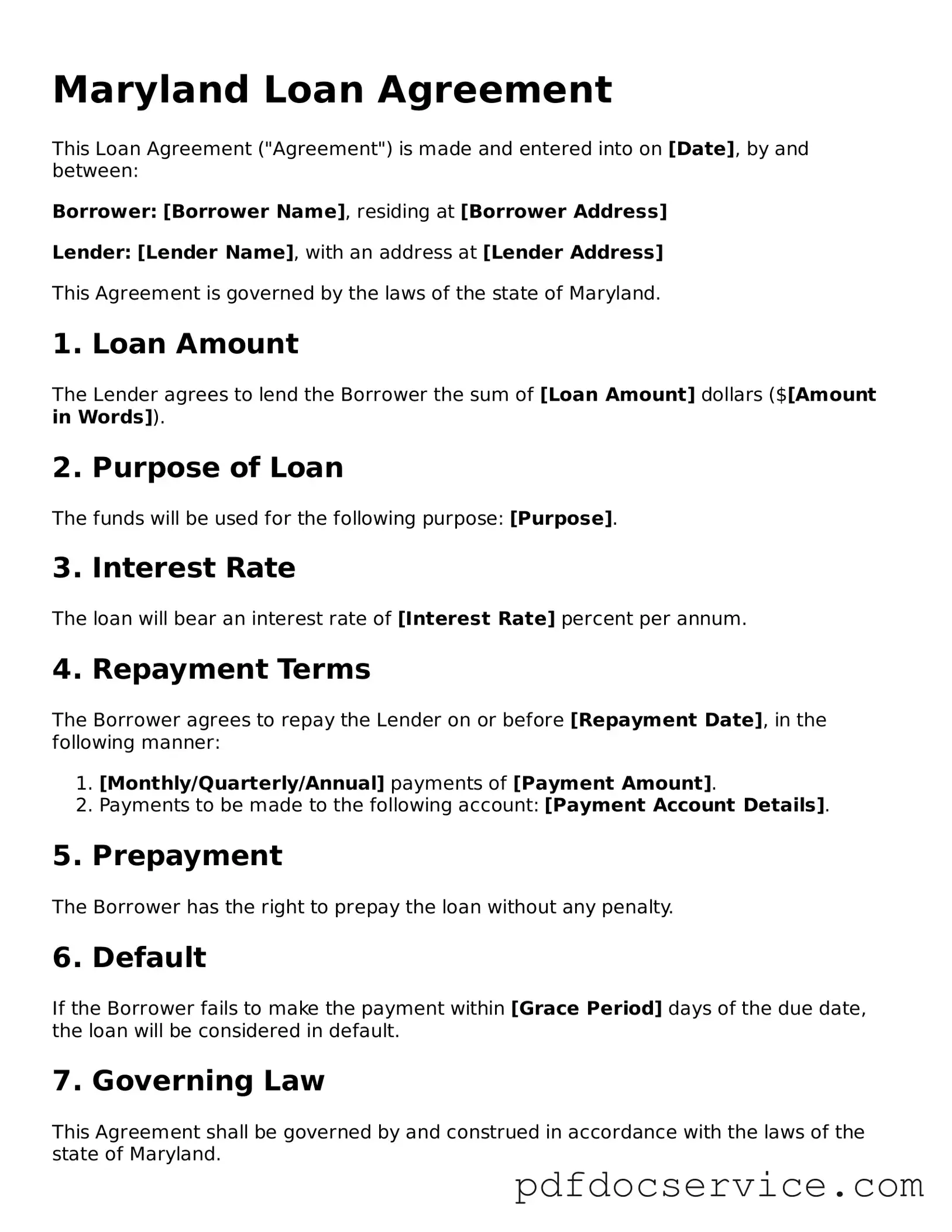A Maryland Loan Agreement form is a legal document that outlines the terms and conditions of a loan between a lender and a borrower. This form specifies the amount borrowed, interest rates, repayment schedule, and any collateral involved.
Who needs a Loan Agreement?
Anyone who is lending or borrowing money should consider using a Loan Agreement. This includes individuals, businesses, and organizations. Having a formal agreement helps protect both parties and clarifies expectations.
What are the key components of a Loan Agreement?
A comprehensive Loan Agreement typically includes the following components:
-
Names and contact information of the lender and borrower
-
Loan amount
-
Interest rate
-
Repayment schedule
-
Terms for late payments
-
Collateral, if applicable
-
Signatures of both parties
Is a Loan Agreement legally binding?
Yes, a properly executed Loan Agreement is legally binding in Maryland. Both parties must sign the document to indicate their acceptance of the terms. It is advisable to have the agreement witnessed or notarized for added protection.
Can I customize a Loan Agreement?
Absolutely. While there are standard templates available, you can customize a Loan Agreement to fit your specific needs. Just ensure that all important terms are included and clearly stated.
What happens if the borrower defaults on the loan?
If the borrower defaults, the lender may have several options, including:
-
Negotiating a new repayment plan
-
Taking legal action to recover the owed amount
-
Claiming any collateral specified in the agreement
It’s important to outline the consequences of default in the Loan Agreement to avoid confusion later.
Do I need a lawyer to create a Loan Agreement?
While it is not legally required to have a lawyer draft a Loan Agreement, consulting with one can be beneficial. A lawyer can help ensure that the agreement complies with Maryland laws and adequately protects your interests.
Where can I find a Maryland Loan Agreement template?
Templates for Maryland Loan Agreements can be found online through legal websites, local libraries, or office supply stores. Ensure that the template you choose is up-to-date and relevant to Maryland law.
Can I use a Loan Agreement for personal loans?
Yes, a Loan Agreement is suitable for personal loans between friends, family members, or acquaintances. Having a written agreement can help prevent misunderstandings and preserve relationships.
